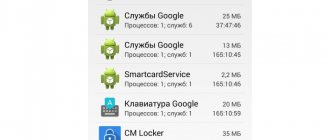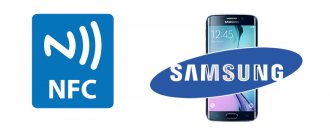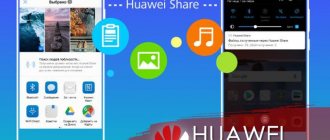Rating: 3.9/5 — 42 votes
We lived in cities and survived in villages, and now we live on the Internet! [email protected]
- LTE is not just Upgrade 3G!
- Characteristics of LTE networks
- Multiplexing Basics and Using MIMO in LTE
- Beamfoming - the basics of beamforming in LTE
- What will happen to 3G networks?
- Comparative table of GPRS, 3G, 4G networks
- Frequency bands and channel widths used by mobile operators in Russia in 2019
- Frequency distribution of cellular communication channels in Russia for 2019
- What is LTE-Advanced
- 6 main features of LTE-Advanced
- Frequency aggregation on a smartphone
- Three carrier aggregation (CA) scenarios
- Which smartphones support LTE-A
- What speeds does LTE have?
- Mobile device categories
- Pros and cons of frequency aggregation
- VoLTE - support for voice calls over LTE
LTE (Long Term Evolution) as defined by the 3GPP consortium is the latest standard for 4th generation (4G) wireless mobile communications. And it is aimed, first of all, at further improvement and development of 3G networks (UMTS and EDVO).
At the network level, LTE operates entirely on IP technology, and at the physical layer (in the radio channel) orthogonal frequency division multiplexing is used, and, as a result, we get high throughput, low latency and fantastic spectral efficiency.
LTE is not just Upgrade 3G!
This is a completely different approach, and its physics is as follows:
- transition from code division of channels (CDMA) to frequency division (OFDMA and SC-FDMA)
- transition from circuit switching to IP technologies - packet switching
According to experts, by 2022 more than 5 billion people will become members of the global community called the “mobile world.” At the same time, half of the entire population of the planet will have constant access to LTE network services.
Further development progress will be associated with LTE Advanced technology, and we will look beyond 2022!
Positive aspects of using LTE technology in mobile gadgets
Now let's look at the positive aspects that LTE and 4G technology brings with it.
If you have an LTE connection on your smartphone, this is:
- Possibility to use video connection for calls. You can even create your own conferences with video communication.
- Various videos, for example, YouTube, can be viewed without freezing the frame.
- LTE can successfully distribute Internet communications as a router using WiFi.
Typically, high Internet speed allows you to expand services and reduce Internet speed.
Characteristics of LTE networks
Performance and Throughput
— one of the requirements of LTE is to ensure a peak throughput of the reverse channel of at least 100 Mbit/s.
The technology provides support for data exchange speeds of more than 300 Mbit/s, but the Swedes have already shown us the next stage of LTE development - with a theoretically possible peak throughput of up to 1.2 Gbit/s.
Simplicity
- Supports flexible bandwidth options with carrier frequencies from 1.4 MHz to 20 MHz and frequency division duplex (FDD*) and time division duplex (TDD*).
Delay
Data transmission in LTE is less than in existing 3G technologies. This benefit is critical for serving immersive interactive environments (such as multiplayer games) and sharing large volumes of media content.
Variety of devices
— in addition to mobile phones and peripheral devices, it is planned to equip many computer and consumer electronic devices with built-in LTE modules. These are laptops, tablets, game consoles and set-top boxes, video cameras and other portable devices.
* When using TDD (Time Division Duplex), the entire bandwidth is alternately allocated for loading or uploading data. When using FDD (Frequency Division Duplex), incoming and outgoing traffic are separated by frequency, data is downloaded at one frequency and downloaded at another.
Main performance characteristics
| Parameter | Meaning |
| Spectrum of bands | 1.4, 3, 5, 10, 15 and 20 MHz |
| Peak speeds |
|
| Antenna configuration |
|
| Delay |
|
| Cell size |
|
| Mobility |
|
| Gain in spectral efficiency |
|
Disabling VoLTE
In principle, you can live peacefully without this technology. Call quality will be the same as we have been accustomed to for many years. In addition, the smartphone may start working a little longer without recharging.
Therefore, if something happens, we turn it off:
- Go to the Android settings, or rather, to the Wireless Networks section.
- Now we find the item Mobile communications. Your name may be slightly different.
- Next, simply switch the VoLTE slider to the off position. After these actions, the icon at the top of the screen will disappear.
The technology is not yet particularly developed, so it is not always possible to get benefits from it. And not all subscribers have the latest smartphones. Therefore, it might make sense to disable it.
Multiplexing Basics and Using MIMO in LTE
LTE uses MIMO systems to improve reliability and to increase data transfer rates. Typically, a MIMO system consists of m transmit antennas and n receive antennas.
In simple terms, the receiver receives a Tx signal, which is obtained when the Rx vector of the input signal is multiplied by the Q matrix of the transmission. Tx = Q * Rx. The transmit matrix Q contains channel impulse responses that refer to the channel between transmit antenna m and receive antenna n. Many MIMO algorithms are based on analyzing the characteristics of the transmission matrix Q. The rank (of the channel matrix) determines the number of linearly independent rows or columns. It specifies how many independent data streams (layers) can be transmitted simultaneously.
Improving data transmission reliability - transmission diversity
When the same data is transmitted redundantly over more than one transmit antenna, it is called transmit diversity. This increases the signal to noise ratio. Space-time codes are used to generate the redundant signal. Alamouti developed the first codes for two antennas. Today, different codes are available for more than two antennas.
Increasing Data Rate - Spatial Multiplexing
Spatial multiplexing increases data transfer rates. The data is divided into separate streams, which are then transmitted simultaneously over the same air interface resources. The transmission includes special sections (also called pilots or reference signals) that are also known to the receiver. The receiver can perform channel estimation for the signal from each transmitting antenna.
In the closed-loop method, the receiver reports the channel status to the transmitter through a special feedback channel. This allows you to quickly respond to changing channel conditions, for example, adapting the number of multiplexed streams. When the data rate must be increased for single-user equipment (UE), it is called single-user MIMO (SU-MIMO). When separate streams are assigned to different users, it is called multi-user MIMO (MU-MIMO).
What are MIMO and MU-MIMO, how does this technology work and what does it do for the end user?
VoLTE - calls over LTE
Surely many of you have noticed the VoLTE function in your smartphone - what it is and why it was created. Many people underestimate her, but in vain. This technology, which is no longer new, allows you to transmit not only traffic, but also voice over 4G.
Simply put, if you have unlimited Internet, then with VoLTE you can talk on the phone as much as you like and completely free .
Another benefit of this feature is battery saving. Due to the fact that voice calls are currently made exclusively via 2G or 3G, during a phone call the device automatically switches from the 4G network to the 3G network, which affects the amount of charge.
And an additional bonus is that you can use the Internet at the same time during a call.
Beamfoming - the basics of beamforming in LTE
Beamforming uses multiple antennas to control the direction of the wave front by appropriately weighting the magnitude and phase of the individual antenna signals (transmission beamforming). This allows for better coverage of specific areas around the edges of the cells. Since each individual antenna in the array contributes to the steered signal, signal amplification (also called beamforming) is achieved.
The formation of receiving beams allows you to determine the direction where the wave front will arrive. It is also possible to suppress selected interfering signals by applying a null radiation pattern in the direction of the interfering signal. Adaptive beamforming refers to the technique of continuously applying beamforming to a moving receiver. This requires fast signal processing and powerful algorithms.
Beamforming is made possible by varying the magnitude and/or phase of the signal at individual antennas. The signals are processed so that they can be added constructively (amplification effect by wave addition) in the direction of the intended transmitter/receiver and destructively (wave attenuation) in the direction of interfering sources.
What is Beamforming, the history of its development, and what is the purpose of forming a beam pattern.
Think about these numbers:
- It took more than 100 years to create 1 billion landline telephone lines...
- ... and in just 20 years, 5 billion people have become mobile subscribers; the globalization of communications is truly enormous!
- By early 2010, the volume of global mobile data traffic exceeded the volume of voice traffic.
- The first mobile application was released in early 2008. And already in 2011, subscribers made 17 billion downloads, which is 112.5% more than in 2010, when this figure was about 8 billion downloads.
- A 10% increase in broadband users increases annual GDP by 1%. In monetary terms, this is about 800 billion dollars and contributes to the creation of millions of jobs around the world.
What is 4G?
The abbreviation stands for 4generation, that is, the fourth generation. In 2008, this standard was recognized by the convention on the development of wireless technologies in Geneva. The maximum promised throughput of this type of communication is 1Gb/s (for landline subscribers) and 100Mb/s (for mobile subscribers). The fourth generation includes two types of wireless Internet technologies - LTE and WiMAX 2. However, the first appearance of the technology among the masses did not satisfy the creators and users, because the speed differed significantly from the declared maximum for the worse. However, under the influence of marketing and the need to promote the new product to the masses, the technology was sold under the guise of full-fledged 4G.
To understand the difference between LTE and 4G, you need to know that LTE is an intermediate stage in the development of wireless communications. The full-fledged 4G generation appeared with the release of the so-called 4G+ or LTE Advanced, which is served under the shell of an “overclocked” Internet. But in fact, this is exactly the speed that the regular 4G standard should show. And this is far from the ceiling for the fourth generation of wireless network. On our website you can read educational material about how 4G Internet differs from 4G+.
What will happen to 3G networks?
Just recently, the world community relied on the development of third generation networks, and the opportunities that these technologies gave us seemed like something out of science fiction. The process of transition to LTE will last for several more years, and during this time 3G networks will also effectively solve the problem of transmitting broadband data to billions of mobile users.
However, sooner or later we will completely switch to fourth-generation networks, and then we can fully talk about meeting customer needs for speed and high throughput of the mobile network - which is so necessary for the development of new applications.
Video blogs and interactive television, remote video surveillance systems via the Internet in real time, new generation 3D games and other professional services place high demands on data transfer speeds, absence of delays and minimal jitter in the operation of a telecommunications network, and LTE is the main driving force of innovative development.
Enable and disable
LTE support depends on several factors:
- Compliance of the device with the declared parameters;
- Communication support by the operator (availability of coverage area);
- Buying a new SIM card.
For correct operation, you need to make sure that your mobile supports new technologies - you can find this out in the mobile specification or directly at the communication store upon purchase.
Do you have an old SIM card installed? No problem - contact the sales office and replace the plastic with a new generation card.
For Android
Now let's figure out how to activate the network on an Android phone. Please note that instructions for different brands may have slight differences, however, the general algorithm of actions does not change:
- Open "Settings";
- Select the "Other networks" menu;
- Open "Mobile networks";
- Check the box next to “Mobile data”;
- Open the “Mode” line and select “WCDMA/GSM”.
Ready! Disabling is carried out according to the same algorithm - you just need to select a different type of connection. Now you know what it is - the LTE network in a Samsung phone and any other Android.
For iPhone
Let's look at connecting and disabling LTE technology in iPhone smartphones:
- Open “Settings” in the mobile menu;
- Go to the “Cellular Communications” block;
- Select the line “Data parameters”;
- Click on the “Enable” button and select “Voice and Data”.
Ready! Disabling is done in the same way - click on the “Disable” line.
We told you what LTE Internet means on a tablet and mobile phone, now you know how to turn the network on and off, what features it has and what needs to be done for it to work correctly.
Comparative table of GPRS, 3G, 4G networks
| Network standard | Technology | Modulation | Data transfer rate (max.) to/from subscriber | Signal bandwidth, MHz |
| GSM | GPRS | GMSK | 20/20 Kbps | 0,2 |
| EDGE | 8PSK | 59.2/59.2 Kbps | 0,2 | |
| UMTS | R99 WCDMA | QPSK | 384/384 Kbps | 5 |
| HSDPA | 16QAM/QPSK | 14.4/5.76 Mbps | 5 | |
| HSPA+ | 64QAM/16QAM | 21/11.5 Mbit/s | 5 | |
| DC HSPA+ | 64QAM/16QAM | 42/23 Mbit/s | 10 | |
| LTE Release 8 | MIMO 2\2 | 64QAM | 150/75 Mbit/s | 20 |
| LTE-Advanced Rel. 10 | Downlink 8x8 MIMO / Uplink 4x4 MIMO | 64QAM | 3/1.5 Gbit/s | 100 |
| LTE-Advanced Pro Rel. 13 (4.5G) | 8x8 MIMO | 256QAM | 25/12.5 Gbit/s | 640 |
In Russia, standard frequency ranges, the so-called bands (BAND), are allocated for equipment of mobile 4G networks:
- 3 - in the 1800 MHz FDD range;
- 7 - in the 2600 MHz FDD range;
- 8 - in the 900 MHz FDD range;
- 20 - in the 800 MHz FDD range;
- 31 - in the 450 MHz FDD range;
- 38 - in the 2600 MHz TDD range.
What's better
In the context of speed modes, the answer is clear, but we must not lose sight of other factors that give a clear picture of the difference between 4G and LTE. The LTE Advanced coverage map cannot yet please with its scale: in reality, this technology is available only in large cities of Russia. However, not all operators provide this service; currently only Megafon and Beeline have it.
Another important aspect in which these communication directions differ is compatibility with other standards. If a 4G network user leaves the coverage area, his device will easily connect to the existing 3rd or 2nd generation network. LTE is not compatible with 3G due to the peculiarities of the data digitization method, so the user, leaving the coverage area, will lose connection with the Internet. In addition, not all mobile devices support LTE technology, and not everyone will decide to purchase a new device to speed up the mobile Internet: for many users, the speeds of the 3G standard are sufficient.
Thus, it will be possible to give clear preference to LTE technology only when the coverage area is actively expanding, and other cellular operators begin to develop and sell full-fledged 4G communication services.
Frequency bands and channel widths used by cellular operators in Russia in 2022
| № | Operator | Frequency range (UL/DL), MHz | Channel width, MHz | Duplex type | 3GPP number | ||||||
| 1 | Megaphone | 847-854.5 / 806-813.5 | 7.5 | FDD | Band 20 | ||||||
| 2 | Megaphone | 1835-1855 / 1730-1750 | 20 | FDD | Band 3 | 3 | Yota (Megafon) | 2500-2530 / 2620-2650 | 30 | FDD | Band 7 |
| 4 | Megaphone | 2530-2540 / 2650-2660 | 10 | FDD | Band 7 | ||||||
| 5 | Megaphone | 2575-2595 | 20 | TDD | Band 38 | ||||||
| 6 | MTS | 839.5-847 / 798.5-806 | 7.5 | FDD | Band 20 | ||||||
| 7 | MTS | 1855-1875 / 1750-1775 | 20 | FDD | Band 3 | ||||||
| 8 | MTS | 2540-2550 / 2660-2670 | 10 | FDD | Band 7 | ||||||
| 9 | MTS | 2595-2615 | 20 | TDD | Band 38 | ||||||
| 10 | MTS | 2595-2620 | 25 | TDD | Band 38 | ||||||
| 11 | Beeline | 854.5-862 / 813.5-821 | 7.5 | FDD | Band 20 | ||||||
| 12 | Beeline | 1805-1825 / 1710-1730 | 20 | FDD | Band 3 | ||||||
| 13 | Beeline | 2550-2560 / 2670-2680 | 10 | FDD | Band 7 | ||||||
| 14 | Tele 2 | 453-457.4 / 463-467.4 | 4.4 | FDD | Band 31 | ||||||
| 15 | Rostelecom/Tele2 | 2560-2570 / 2680-2690 | 10 | FDD | Band 7 | ||||||
| 16 | Rostelecom/Tele2 | 832-839.5 / 791-798.5 | 7.5 | FDD | Band 20 |
Frequency distribution of cellular communication channels in Russia for 2019
What will LTE bring to the end user?
Increased throughput and minimal delays, greater stability of the communication channel, reduced traffic costs - all together this opens up new opportunities for users, services become higher quality and less expensive.
What are the benefits of LTE for operators?
Future-proof network technologies in terms of power, throughput and user experience. These are new commercial opportunities and sources of income for both old operators and new ones.
Since the new networks can be used for communication technologies of any generation - 2G, 3G and 4G, this will reduce the capital and operating costs of operators.
What is LTE?
Now let's look at LTE as a separate type of data transmission over the air. The abbreviation stands for Long Term Evolution, which translates as long-term development. LTE is the first stage in the development of 4G at the very beginning of its appearance. The characteristics and capabilities of this network do not meet the requirements of the International Telecommunication Union, however, to attract people, manufacturers use LTE under the guise of full-fledged 4G. Over time, the union approved the use of these two concepts in one label, which is why it exists to this day.
When technologies make it possible to achieve the stated speeds, operators began to offer full 4G (or as the ITU called it - True 4G) for 4G+ or Advanced. Now you know the main difference between 4G and LTE. Also on our website you can find out the main differences between 5G and 4G!
HSPA+ technology can compare in parameters with LTE. Many people probably notice that sometimes when the signal is bad, the H+ icon appears. This type of wireless connection belongs to the third generation (3G) and offers more modest data transfer speeds.
What is LTE-Advanced
The first set of LTE specifications was completed in March 2009. The first commercial LTE network was launched in December 2009. According to Ovum WCISK, by the end of 2022 the number of connections to LTE networks will be 5 billion. The first smartphones with LTE support were introduced in 2011. Basic technological capabilities are further developed, leading to even higher data rates and higher base station densities, and the next step in the evolution of development is called LTE-Advanced. It is aimed at obtaining speeds above 1 Gbit/s. LTE-A development begins with release 10, which was completed in June 2011.
6 main features of LTE-Advanced
- Downlink carrier aggregation to increase data rates up to 300 Mbps using 20+20 MHz spectrum and 2x2 MIMO, and then even up to 3 Gbps using 100 MHz bandwidth and 8x8 MIMO. To increase data transfer speed, more bandwidth is needed.
- The evolution of MIMO to 8x8 towards the subscriber and 4x4 towards the base station, which provides advantages for using beamforming technology, increasing network throughput during carrier aggregation. Multi-antennas increase data transmission speed and network capacity.
- Heterogeneous network (HetNet) for co-location of macro-, micro- and picostations. HetNet features enable interference coordination between network layers and increase network capacity and local coverage with high density picocells while sharing frequency with micro and macro cells.
- Relay nodes for transit transmission of base station data via the radio interface. The transmission line may use in-band or out-of-band transmission. Relay nodes are used to increase network coverage when terrestrial backbone connections are not available.
- Coordinated multipoint transmission and reception (CoMP) allows the use of several sectors of different BSs to transmit data to a single terminal. Coordinated multipoint communication is used to improve the data rate at the cell edge, which is limited by inter-cell interference. Transmission towards the subscriber can be carried out from several sectors at the same time, and vice versa, data is received from the subscriber by several sectors.
- Self-Organizing Networking (SON) speeds and simplifies network deployment and improves end-user productivity by ensuring network settings are configured correctly and optimized.
Comparison of 3G and 4G
Compared to the third generation, the advantages of the fourth look extremely impressive:
- 4G provides speeds many times higher than similar third-generation solutions (peak speed – 42-63 Mbit/s versus 1 Gbit/s). Also, it offers a smaller response, which saves in situations where it is important to act quickly and with fewer losses.
- The difference is in implementation - 4G is based on packet data transmission, and 3G is based on circuit switching.
- VoIP technology support and integration with E-Ultra.
- The signal is many times more stable even when changing geographical location.
Despite the tangible benefits, it is important to remember the disadvantages. A new round of development of wireless mobile communication technologies implies a change in network equipment and additional maintenance costs. Due to incompatible data transmission methods, higher peak bitrates and changing frequencies, operators and providers have to invest more in hardware.
But, as the dynamics of distribution of the fourth generation suggests, a sharp break away from 3G is not expected any time soon. Many countries are still interested in exploiting intermediate technological solutions and are in no hurry to invest in upcoming discoveries. That’s why it’s difficult to determine in advance which is better: subscribers are interested in a quick and widespread transition to 4G or LTE, but operators and investors would never give up even 2G.
Frequency aggregation on a smartphone - what is it and how to increase speed?
Aggregation of carrier frequencies of smartphones from Huawei, Samsung, iPhone and other brands is a mechanism for combining frequency ranges into a single band in order to increase the capacity of the Internet channel. This uses MIMO technology and support for intermediate relays (Relay Nodes). Simply put, this is a way to speed up data transfer on 4G networks. It is actively used in the LTE-Advanced (LTE A) standard; mobile operators call this technology 4G+.
How frequency aggregation works
As of 2022, 4G in Russia operates in 6 frequency bands.
Each of them uses not one specific frequency, but a certain segment wide: 1.4, 3, 5, 10, 15, 20 MHz. This was done so that each operator in each range gets a frequency segment. Frequency aggregation combines several such segments into a single “corridor”. For example, it makes one, multi-band, 20 or 30 MHz wide, out of 2 or 3 sections of 10 MHz each. Using this technology, smartphones can transmit/receive data via two channels at once, which significantly increases the data transfer speed. Thus, the limitation on the number of connected subscribers is overcome and the channel bandwidth is increased.
The principle of aggregation of 3 frequency channels in LTE-Advanced
In Moscow, the Megafon operator has 40 MHz of continuous spectrum in the 7th band (2600 MHz band), and MTS, Tele2 and Beeline have only 10 MHz each. Thus, Megafon has a significant advantage in network capacity and speed. In turn, it is important for MTS subscribers to check whether their phone supports band 38 (2600 TDD), because this operator has wide coverage in Moscow - 20 MHz. Beeline and Tele2 are lagging behind in the capital.
Not only subnets of different gangs are available for aggregation, but also subnets of different separation standards are available. That is, you can simultaneously connect to the FDD subnetwork (frequency division of channels), and to the TDD subnetwork Band 38, where time division of channels is used for receiving and transmitting signals (unlike











